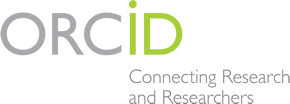Güzel Sanatlar Ekseninde Sorumlu Yapay Zekâ: Potansiyel Riskler ve Etik Boyutlar
DOI:
https://doi.org/10.47613/reflektif.2024.149Anahtar Kelimeler:
güzel sanatlar- yapay zekâ- sorumlu yapay zekâ- etik- sanat ve tasarımÖz
Günümüzde sanatçı ve tasarımcılardan amatör kullanıcılara kadar birçok kişi yapay zekâ üretimlerden yararlanmaya başlamıştır. İnsanoğlu artık uzun süreli çalışmalar sonucu ortaya çıkan sanat ve tasarım ürünlerinin benzerlerini dakikalar hatta saniyeler için de yapabilen yapay zekâ ile karşı karşıyadır. Yapay zekâ bu becerisini güçlü teknolojik alt yapıların yanı sıra içerisinde milyarlarca görsel ve işitsel ögeyi barındıran veri tabanlarından almaktadır. Bu durum birçok sorgulamayı da beraberinde getirmektedir. Güzel sanatlar alanında yapay zekâ kullanımı, yaratıcı sürece katkı sağlayabilir, ancak aynı zamanda potansiyel risklere ve etik boyutlara (telif hakları, şeffaflık, veri yönetimi vb.) da yol açabilmektedir. Bu makale yapay zekâ ve sorumlu yapay zekâ arasındaki ilişkiyi Güzel Sanatlar örnekleminde ele alarak tartışmaya açmaktadır. Makalede, sorumlu yapay zekâ kavramının güzel sanatlar alanında da öne çıkması gerektiği, potansiyel risklere ve etik problemlere karşı, yapay zekâ kullanımında sorumluluk sahibi olmak için sanatçı ve tasarımcılar, teknoloji uzmanları ve karar vericiler arasında iş birliğinin önemli olduğu vurgulanmış. Ayrıca, toplumsal değerleri ve etik standartları koruma amacıyla uygun politika ve yönergelerin uygulanması gerektiği sonucuna ulaşılmıştır.
İndir
Yayınlanmış
Sayı
Bölüm
Lisans
Telif Hakkı (c) 2024 Ezgi Şen Atiker

Bu çalışma Creative Commons Attribution-ShareAlike 4.0 International License ile lisanslanmıştır.
REFLEKTİF Sosyal Bilimler Dergisi'ne yayımlanması için değerlendirilmek üzere gönderilen makaleler, daha önce herhangi bir ortamda yayınlanmamış veya herhangi bir yayın ortamına yayınlanmak üzere gönderilmemiş olmalıdır.
Makalelerin yayıma kabul edilmesi durumunda ticari amaç da dahil olmak üzere ve aynı lisansı kullanılmak şartıyla, çalışmanın başka çalışmalarla birleştirilmesi, çalışmanın üzerine yeni bir çalışma yapılması ya da farklı düzenlemeler yapılmasına izin verilir.
REFLEKTİF Sosyal Bilimler Dergisi'nde yayınlanan çalışmaların telif hakları yazarına aittir. Yazarlar çalışmalarını çoğaltmak ve yaymakta özgürdür.








